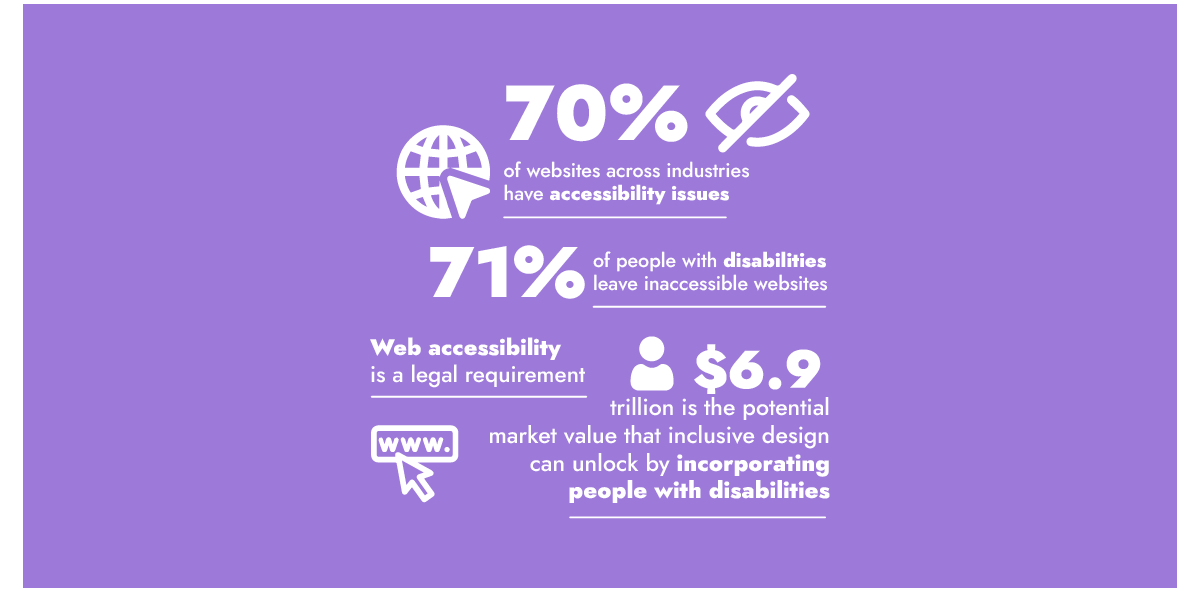Why is digital accessibility necessary? This is a question that deserves attention and exploration. In this modern age of technology, web accessibility has become increasingly important to ensure that all individuals, regardless of their abilities, can access and navigate online content. Web accessibility refers to the design and development of websites, applications, and other digital platforms in a way that allows people with disabilities to perceive, understand, navigate, and interact with them effectively. Canada has specific web accessibility standards and regulations in place to promote inclusivity and equal access to information and services for everyone.
What is WCAG and Why is Accessibility Important
The Web Content Accessibility Guidelines (WCAG) provide a comprehensive set of technical criteria and guidelines for web accessibility. WCAG is internationally recognized and widely adopted as the standard for creating accessible digital content. It offers a structured approach to ensure that websites and digital platforms are designed and developed with accessibility in mind. By following WCAG, organizations can enhance the usability and inclusivity of their online presence, providing equal opportunities for everyone to access and interact with their content.

Web accessibility is necessary for several reasons. Firstly, it promotes inclusivity and equal access to information and services for individuals with disabilities. By making websites and digital platforms accessible, organizations ensure that people with visual impairments, hearing loss, mobility limitations, cognitive disabilities, and other challenges can independently access and engage with online content. This not only improves their overall quality of life but also allows them to participate fully in society.
Moreover, web accessibility benefits everyone, not just individuals with disabilities. Clear and intuitive navigation, alternative text for images, closed captions for videos, and other accessibility features enhance the user experience for all users. It allows individuals in noisy environments or with slow internet connections to access content, improves search engine optimization, and accommodates diverse needs and preferences.
Web Accessibility Standards and Requirements in Canada
Web accessibility standards in Canada adhere to the Web Content Accessibility Guidelines (WCAG). These guidelines provide a framework for creating accessible web content, ensuring that websites are perceivable, operable, understandable, and robust for individuals with disabilities. WCAG compliance is required in Canada to meet accessibility requirements and create inclusive digital experiences. Organizations must follow these standards to ensure their websites and digital platforms are accessible to individuals with disabilities.
While the Americans with Disabilities Act (ADA) is specific to the United States, similar accessibility requirements exist in Canada. The Accessibility for Ontarians with Disabilities Act (AODA) outlines the accessibility requirements and obligations for different sectors and organizations in Canada. The law emphasizes the importance of making digital content accessible to individuals with disabilities and ensuring equal access to information and services.
The Impact of Web Accessibility on User Experience
The impact of web accessibility on user experience is significant and far-reaching. When websites and digital platforms are designed with accessibility in mind, it creates a more inclusive and user-friendly environment for all individuals, regardless of their abilities. Here are some key aspects of how web accessibility positively influences user experience:
The impact of web accessibility on user experience is significant and far-reaching. When websites and digital platforms are designed with accessibility in mind, it creates a more inclusive and user-friendly environment for all individuals, regardless of their abilities. Here are some key aspects of how web accessibility positively influences user experience:
1. Improved Navigation: Web accessibility features, such as clear and consistent navigation menus, keyboard accessibility, and logical page structure, make it easier for users to navigate through the content. This benefits individuals with disabilities, such as visual impairments or mobility limitations, who may rely on assistive technologies like screen readers or keyboard navigation. However, it also benefits all users by providing a seamless and intuitive browsing experience.
DIGI-TIP: Implement ARIA (Accessible Rich Internet Applications) landmarks to provide landmarks for screen reader users, making it easier for them to navigate through your website.
2. Enhanced Content Perception: Web accessibility ensures that content is perceivable by individuals with different sensory abilities. This includes providing alternative text descriptions for images, transcripts or captions for multimedia content, and proper color contrast for readability. By incorporating these accessibility features, websites become more inclusive and enable users with visual impairments or hearing disabilities to comprehend and engage with the content effectively.
DIGI-TIP: Include audio descriptions for video content, which describe the visual elements for users with visual impairments, ensuring a comprehensive understanding of the content.
3. Increased Engagement: When websites prioritize web accessibility, it encourages greater user engagement. Accessibility features like adjustable text sizes, adaptable layouts, and customizable user settings empower individuals to personalize their browsing experience based on their specific needs and preferences. This flexibility creates a sense of inclusivity and empowerment, leading to increased engagement and longer user sessions.
DIGI-TIP: Incorporate closed captions for live videos and webinars, enabling individuals with hearing disabilities to participate and engage fully.
4. Broader Audience Reach: By implementing web accessibility, websites expand their potential audience base. People with disabilities represent a significant portion of the population, and ensuring their access to online content opens doors to valuable insights, contributions, and potential customers. Moreover, accessibility considerations often align with good usability practices, benefiting all users regardless of disability status. This broader audience reach can lead to increased traffic, improved conversions, and enhanced brand reputation.
DIGI-TIP: Conduct regular accessibility audits and user testing with individuals with disabilities to identify and address any barriers in your website’s accessibility.
5. Compliance with Legal and Regulatory Requirements: Web accessibility is not only a matter of providing a positive user experience but also a legal requirement in many jurisdictions, including Canada. By complying with web accessibility standards and regulations, organizations avoid potential legal issues and demonstrate a commitment to inclusivity, diversity, and social responsibility.
DIGI-TIP: Create an accessibility policy page on your website, outlining your commitment to accessibility and providing information on how users can report any accessibility issues they encounter.
In conclusion, incorporating effective UI/UX design principles is crucial for ensuring web accessibility, as it allows organizations to create inclusive and user-friendly online experiences through intuitive interfaces, streamlined navigation, and visually appealing layouts for individuals with disabilities and all users. By ensuring that websites and digital platforms are designed and developed with accessibility in mind, organizations can promote equal access to information and services for people with disabilities. Web accessibility not only improves the lives of individuals with disabilities but also benefits everyone by enhancing user experience, expanding audience reach, and complying with legal requirements. It fosters inclusivity, empowers users to personalize their browsing experience, and creates a more user-friendly online environment. By prioritizing web accessibility, organizations demonstrate their commitment to inclusivity and contribute to a more accessible and equitable digital landscape.









































